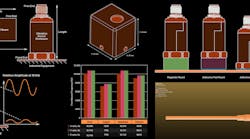This article series is in the Analog topic within our Series Library
A well-constructed mechanical enclosure design for a MEMS accelerometer, or vibration sensor, will ensure that high-quality vibration data for condition-based monitoring is extracted from the monitored asset. The mechanical enclosure used to house a MEMS accelerometer needs to have a frequency response better than the integrated MEMS.
This three-part series delves into the use of modal analysis to provide the natural frequencies possible with enclosure designs. Guidance on vibration sensor design is provided using theoretical and ANSYS modal simulation examples. It's shown that geometry effects, such as enclosure shape (such as a cylinder or a rectangle), and height dominate the natural frequencies in enclosure design. Mechanical design examples are provided for housing single-axis and triaxial MEMS accelerometers with 21-kHz resonant frequency. In addition, guidance is given on epoxy integration in enclosures, as well as cable installation and mounting options for sensors.
